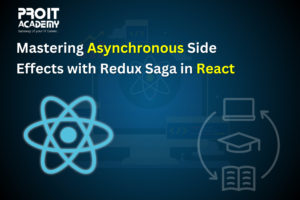Developers and server designers frequently confuse Java HashMap with HashTable, but the two terms are distinct and have wide meanings. Although HashMap and HashTable share the same origin, the two have numerous differences.
First, let us understand what hashmap vs hashtable in java and their implications are. Then we will discuss their differences on various bases to gain a better understanding of Java HashTable vs HashMap.
What Exactly Is HashMap?
HashMap is a collection class in Java that is based on the Map data structure and is used for storing data in the form of key-value pairs. It lends us a hand as we develop the Map interface in Java. Since the introduction of Java version 1.2, it has been a fundamental part of Java’s collection. It includes the simplest implementation of the Map interface in Java that may be found. You need to be familiar with the HashMap’s Key to retrieve any value stored within the HashMap.
It gets its name from the process it employs, known as hashing. The technique of transforming one long string into a shorter one while maintaining the value of the original string is referred to as hashing. The resulting value, which has been compressed, is used for indexing and conducting speedy queries.

What Exactly Is HashTable?
A hashtable is a common type of data structure that is utilised to store data in the form of key-value pairs. A hashtable organises thedata it keeps in an array, with each data item having its index value and being the only one of its kind. If the requested data’s index is known, it makes it possible to obtain the data relatively quickly.
The Hashtable class is responsible for implementing hashtables in Java. This class is responsible for mapping the keys to the values. It implements the Map interface and inherits it from the Dictionary class.
HashTable vs HashMap
Hashtable vs hashmap java implements the Map interface, but there are some distinctions between them. They are as follows:
- Thread Safety (synchronized)
- Null Keys
- Inheritance
- Performance
- Traverse
- Fail-safe
- Time Complexity
- Legacy
1.Thread Safety (synchronized)
HashMap is a collection that is not thread-safe and hence unsynchronized, whereas Hashtable is a collection that is thread-safe and therefore synchronized. This is the first and most significant difference between Hashtable and HashMap. This makes HashMap a better choice in applications that do not use threading, as the performance of unsynchronized objects is often superior to that of synchronized things.
When a hash table is said to be synchronized, this means that only one thread at a time can edit it. Simply put, it indicates that before any thread may make an update on a hashtable, that thread must first obtain a lock on the object, after which all other threads must wait until the lock is released.
By calling this code, you will be able to synchronize the HashMap, which will make it thread-safe.
Map mp = Collections.synchronizedMap(hashMap);
2. Null Keys
HashTable entries can only ever have non-null objects as keys or values. The objects used as keys in a hashtable need to have the hashCode method and the equals method implemented for the table to store and retrieve objects. Because “null” is not an object, you cannot use the.equals() or.hashCode() methods on it. As a result, the Hashtable cannot generate a hash for it to use as a key in the table.
HashMap can store both null keys and values in some cases. It is more recent and possesses more advanced features, which, in essence, are just an enhancement of the functionality of the Hashtable. HashMap was developed to handle null values in the role of key, and it does so by treating them as a particular case in its operation.

Book Your Time-slot for Counselling !
3. Inheritance
Although HashMap and HashTable both implement the Map interface, the two classes they extend are not the same. The HashMap class extends the AbstractMap class, but the HashTable class extends the Dictionary class, which is the JDK’s legacy class.
4. Performance
HashMap is not a synchronized Map, which means it is significantly faster and better than a Hashtable in terms of performance. It also takes less memory than a Hashtable, which is another advantage. Hashtables are slower than HashMaps but faster than synchronized HashMaps, even though they are practically similar.
Because Hashtable’s methods are the only synchronized parts, using it in conjunction with multithreaded access is inherently unsafe. Hashtable is the synchronized version of the hashmap data structure. While compared to synchronized objects, the performance of unsynchronized objects is superior, much as the performance of a hash table is superior when operating in a single-threaded environment.
5. Traverse
The iterator is the object responsible for traversing HashMap, while Enumerator and Iterator are responsible for traversing Hashtable.
6. Fail-Safe
The enumerator for the Hashtable is not fail-safe, but the iterator used in the HashMap is. Iterators are important for understanding the relevance of fail-safe. If another thread attempts to “structurally” edit a collection object after an iterator has been established on the collection object, a concurrent modification exception will be issued. The iterator prevents the other thread from modifying the collection object.
7. Time Complexity
Hashtable employs a collision handling strategy called separate chaining, which consists of linked lists, to achieve a search time bounding O(n). HashMap uses Balanced Tree as its collision resolution strategy as of Java 8; this strategy has a bounding search time of O(log n).
8. legacy
From the moment it was first presented in JDK 1.2, the HashMap data structure has been an integral part of the Java Collection Framework. However, HashTable has been around since before JDK 1.2, extending the Dictionary class, which is the JDK legacy class. It has been required to implement the Map interface since JDK 1.2, which has resulted in it becoming a member of the collection framework.
When Should HashMap and Hashtable Be Used?
- Single Threaded Application
In non-threaded applications, HashMap is superior to Hashtable and should be used wherever possible. To put it another way, make use of HashMap in applications that are unsynchronized or single-threaded.
- Multi Threaded Application
Because the Hashtable class is no longer supported by the most recent version of JDK (1.8), we should avoid utilising it. Oracle has made available, under the name ConcurrentHashMap, a superior alternative to the Hashtable. Hashtable should be avoided in favour of ConcurrentHashMap when developing applications that support multiple threads.
Want to start a career as a Java Developer and master the skills from experts? Do Check out Java Classes in Pune now.
Difference Between Hashmap And Hashtable
| HashMap | HashTable |
| The HashMap is an upgrade to the HashTable. It was a new type of class that was added to the JDK 1.2. | The HashTable, on the other hand, is the legacy class. It was made available before the HashMap. |
| The way they work on the inside is mostly the same for both. The only difference is that HashMap can have more than one null value but only one null key. | The way a HashTable is built on the inside means that it can’t have a null value or key. |
| The HashMap stays out of sync. It’s because it doesn’t hold threads very well. With the right set of synchronisation codes, a user can’t share it between different threads. | The HashTable is always in sync. It’s safe for the threads. It can be shared with different threads. |
| It lets you use one null key to get multiple null values. | It doesn’t let any keys or values be null. |
| Iterator lets you move through a HashMap. The HashMap gives the user an Iterator that can be used to go through all of the stored values. | On the other hand, an Iterator and an Enumerator make it easy to move through the values in a HashTable. |
| A user can get the HashMap in sync by calling a certain code. | HashTable is always synchronized on the inside, so there is no such thing as an unsynchronized HashTable. |
| It comes from the class AbstractMap. | It gets its name from the class Dictionary. |
| Compared to the HashTable, the HashMap works very quickly. It is because it isn’t in sync with anything else. | Compared to the HashMap, the HashTable is very slow. It’s because they are in sync with each other. In this case, though, you don’t need to write extra code to get synchronization. |
| It’s a new kind of class that came out with JDK 1.2. | It is an inherited class. |
| HashMap comes with a fail-fast Iterator. | The Enumerator in a HashTable is not guaranteed to work. |

Do you need help to create your career path ?
The Bottom Line
In conclusion, now that we recognize the difference between hashmap and hashtable in Java, both HashMap and HashTable are effective Java data structures for finding solutions to problems. The AbstractMap class is inherited by a HashMap, whereas a HashTable inherits the Dictionary class.
If you are considering a profession in Java or Spring Boot, you should familiarise yourself with a few ideas such as hibernation, class-object, and JSON. Doing so will assist you in dealing with server designing more effectively and efficiently, creating algorithms.
Before enrolling in any class, ensure that you have a solid understanding of the various technical phrases, as this will ensure that you learn precisely the information you require. If you want to construct a few projects on your own under our mentors’ guidance, you can check out several courses at ProIT Academy on Data Structures and Algorithms in Java. These courses can be found on our website.












